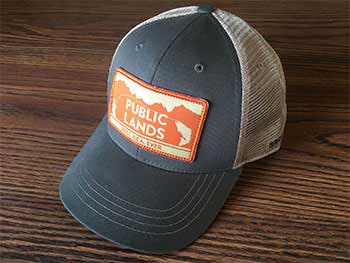Where
The Mashpee National Wildlife Refuge protects 5,871 acres in the Waquoit Bay area, in the towns of Mashpee and Falmouth on the southwestern tip of Cape Cod. The refuge – a blend of salt marshes, cranberry bogs, Atlantic white cedar swamps, freshwater marshes, rivers and vernal pools – is the result of a unique partnership among nine federal, state and private conservation groups. The region is home to a resurgent population of native sea-run brook trout—“salters,” in the local parlance.
Mashpee National Wildlife Refuge
Why
A rare chance to catch and release salters.
“A case can be made that salters were America’s first sport fish,” said Geoffrey Day, Executive Director of the Sea Run Brook Trout Coalition. “There’s certainly documentation that John Adams, John Rowe, Daniel Webster and Theodore Lyman were avid salter anglers.” Lyman was so enamored with salters, he acquired considerable acreage near Plymouth to preserve key spawning grounds.
While salter fishing opportunities are limited, they thrive on the Quashnet River, a catch and release salter stream in Massachusetts. The other is Red Brook on the Lyman Reserve.
“They are piscivorous, so streamers work best—Light Edson Tigers, Mickey Finns and Empie’s Golden Shiners,” Day continued. “The fishing is challenging, especially if you don’t often fish small streams. You’ll need to present the fly downstream, often with a bow-and-arrow- or roll-cast. The takes are very light; you have to keep a tight line and bring the rod tip up at the exact right time to hook up.”
While fishing may not be easy, access is. Anglers can show up, park and walk a short trail to the river. Most fish are less than 12 inches, but native salters to 16 inches have shown up in electro-fishing surveys.
A case can be made that salters were America’s first sport fish. There’s certainly documentation that John Adams, John Rowe, Daniel Webster and Theodore Lyman were avid salter anglers.
Geoffrey DayLocal knowledge
“Fishing the Quashnet isn’t about numbers of fish caught, it’s about an opportunity to fish for a unique native trout that has been restored to its home waters. This opportunity would not exist today if it were not for the tireless work of numerous partners,” said Tim Lynch, President of Cap Cod Trout Unlimited.
The Chapter hosts restoration workdays on the Quashnet River, typically on the third Sunday of the month. These workdays are a great way to give back to the resource and you might even pick up a fishing tip or two from the people who know the river best.
TU Initiatives
By the beginning of the 20th century, the Quashnet was more cranberry bog than river. In the mid-1970s, Cape Cod Trout Unlimited volunteers – led by Fran Smith – began restoring the river to its former glory. Their work – which included removing willows from the river channel to constructing “hides” along the edges to give fish cover from predators – had stellar results. By the early 2000’s, salters were re-established. Visit The Cape Cod TU website to learn more about collaborative work to restore brook trout and the Quashnet River.
Support public lands and look good doing it!

Make a Difference
Please take a moment to express your opposition to EPA’s proposal to rescind the Clean Water Rule and your support for protecting headwater streams. Earlier this year the EPA announced a proposed rule that would rescind the 2015 Clean Water Rule. The 2015 Clean Water Rule did a good job of clarifying and restoring Clean Water Act protections for headwater streams and wetlands.
Please visit standup.tu.org to send a message to the EPA that you oppose its proposal to rescind the 2015 Clean Water Rule and support protecting the Nation’s headwater streams and wetlands.

